ATHENS CITY & SARONIC GULF SIGHTSEEING TOUR
This tour also starts from Athens Int. Airport following the same route as the Historic Centre Tour of Athens. However, as soon as you reach the port of Piraeus that is when the most beautiful part of the tour starts. Flying on a relatively lower altitude over the sea you will have the chance to view the charm of the Saronic Gulf islands and the famous ancient temple of Aphaia Athena located at Aegina island. The duration of the tour is approx. 60 minutes.
Route Details
Athens airport – Athens Olympic Complex – Lycavittos Hill – Ancient Agora – Acropolis – Panathenaikon Stadium (Kalimarmaro)- Port of Piraeus – Aegina island Temple of Afea Athena – Athens airport
The Athens Olympic Sport Complex (Olympic Park)
The OAKA is the Athens Olympic Sport Complex and is seen by many as a work of art in every respect, not only is it the main Olympic complex of the Greek capital, comprising of some of the most important sports facilities, but it is also one of the most important monuments of Athens after the Acropolis.
The Olympic park is in the modern quarter of Marussi 10km north of the centre, it is a huge architectural complex that sums up the skills and creativity of the Spanish architect Santiago Calatrava. The park has been reconstructed to house the Olympic games of Athens 2004 and the architect has created an unprecedented spectacular project, letting his imagination loose.
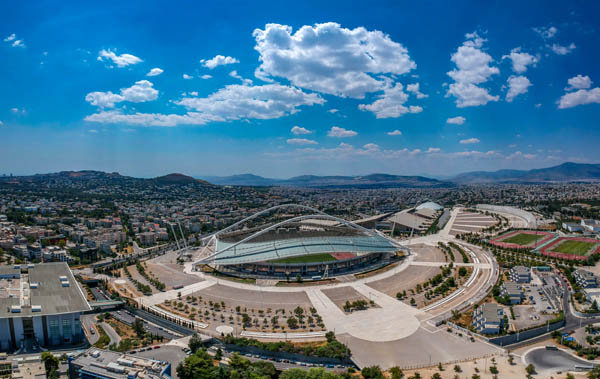
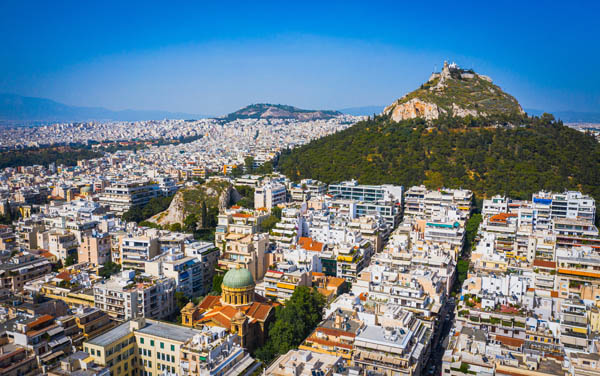
Lycabettus Hill
Mount Lycabettus, also known as Lycabettos, Lykabettos or Lykavittos is a Cretaceous limestone hill in the Greek capital Athens. At 300 meters (908 feet) above sea level, its summit is the highest point in Athens and pine trees cover its base. The name also refers to the residential neighbourhood immediately below the east of the hill.
The hill is a tourist destination and can be ascended by the Lycabettus Funicular, a funicular railway which climbs the hill from a lower terminus at Kolonaki. At its two peaks are the 19th century Chapel of St. George, a theatre, and a restaurant.
Ancient Agora of Athens
The ancient Agora of Athens (also called the Classical Agora) is the best-known example of an ancient Greek agora, located to the northwest of the Acropolis and bounded on the south by the hill of the Areopagus and on the west by the hill known as the Agoraios Kolonos, also called Market Hill.
The Agora’s initial use was for a commercial, assembly, or residential gathering place.
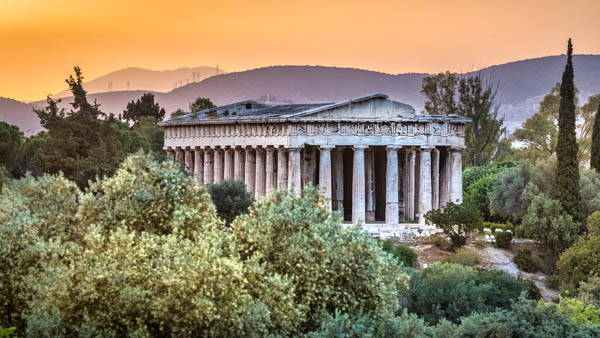
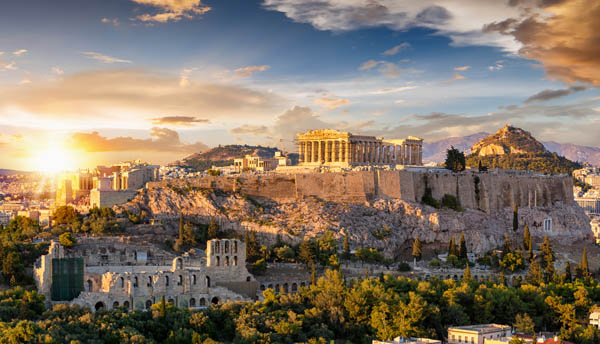
Acropolis
The Acropolis of Athens and its monuments are universal symbols of the classical spirit and civilization and form the greatest architectural and artistic complex bequeathed by Greek Antiquity to the world. In the second half of the fifth century bc, Athens, following the victory against the Persians and the establishment of democracy, took a leading position amongst the other city-states of the ancient world. In the age that followed, as thought and art flourished, an exceptional group of artists put into effect the ambitious plans of Athenian statesman Pericles and, under the inspired guidance of the sculptor Pheidias, transformed the rocky hill into a unique monument of thought and the arts.
The most important monuments were built during that time: the Parthenon, built by Ictinus, the Erechtheon, the Propylaea, the monumental entrance to the Acropolis, designed by Mnesicles and the small temple Athena Nike.
Panathenaic Stadium
Athens’ Panathenaic Stadium or Panathinaiko, is also known as the Kallimarmaro, which means “beautifully marbled” and is the world’s only stadium made entirely of marble which comes from nearby Mount Pendeli. It was built in 1896 for the first modern Olympics in the ruins of the ancient marble stadium that was built in 329 for the Panathenaic Games, by Lycurgus, replacing an even older stadium made of wood.
In 140 AD it was enlarged and renovated by Herodes Atticus and it seated 50,000 people as it does today. (During the 1896 Olympics it held 80,000 people!)
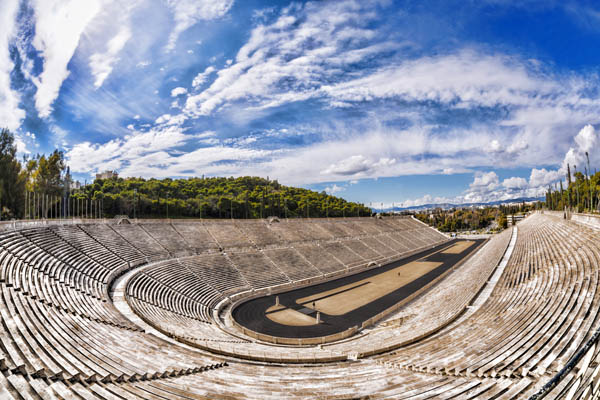
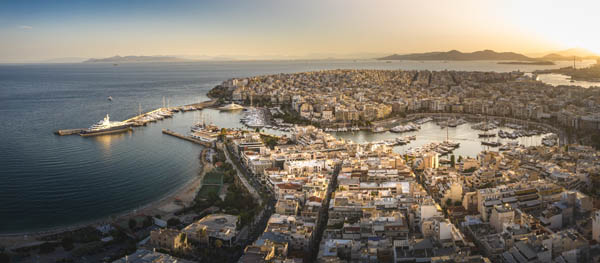
Port of Piraeus
Piraeus, located in the southeast of Greece, is home to Europe’s biggest passenger port and as such is a huge draw for cruise ships from around the world bringing tourists eager to explore this centuries-old city.
With a population of more than 160,000, Piraeus has many attractions to fill an entire vacation including religious and historic landmarks and fantastic restaurants. Yet another major draw is the fact that it is easy to visit Athens because it’s located nearby. The Greek capital city of Athens is just 12 kilometers (7 miles) from Piraeus.
Aegina island – Athena Aphaia Temple
The Temple of Aphaia has been dedicated to goddess Athena and is located on the island of Aegina, on top of a hill. This is one of the ancient architectural wonders of ancient Greece. It was built in 480 BC and 25 of the original 32 Doric columns still stand due to the skill of the restorers. It is situated in a Sanctuary complex in Aegina about 13 km east of the main port.
The temple was built over the ruins of an earlier temple built around 570 BC that existed at the very site but was later destroyed in the fire in 510 BC. The remains of this old temple were filled to get a larger flat terrace on which to build a new temple. This led to the ruins of the old temple to be well preserved. Many painted remnants are still found.
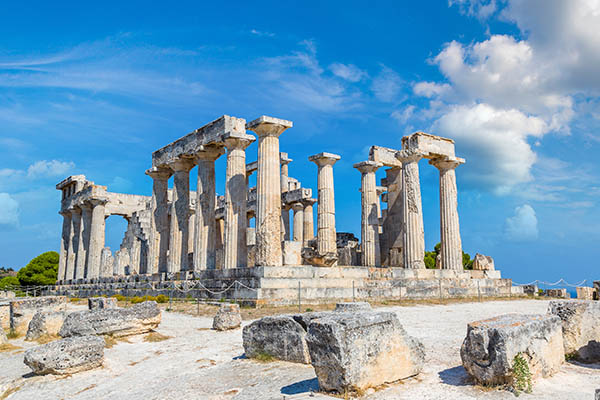
BOOK YOUR ATHENS RIVIERA & CAPE SOUNIO SIGHTSEEING TOUR
Please fill below your details to learn more about our prices and availability.

